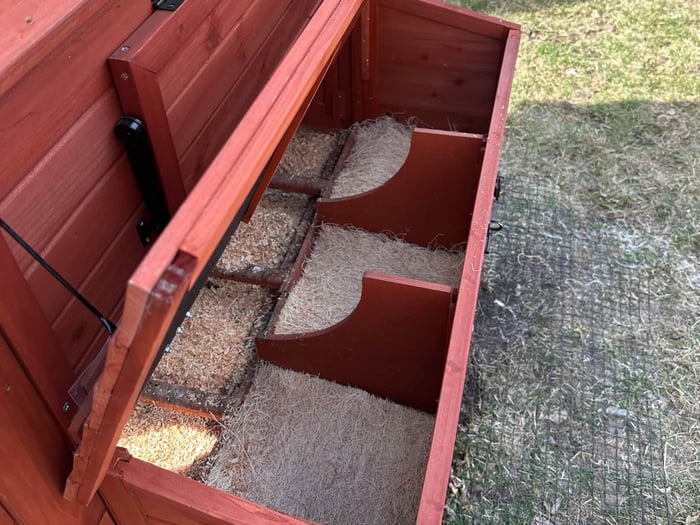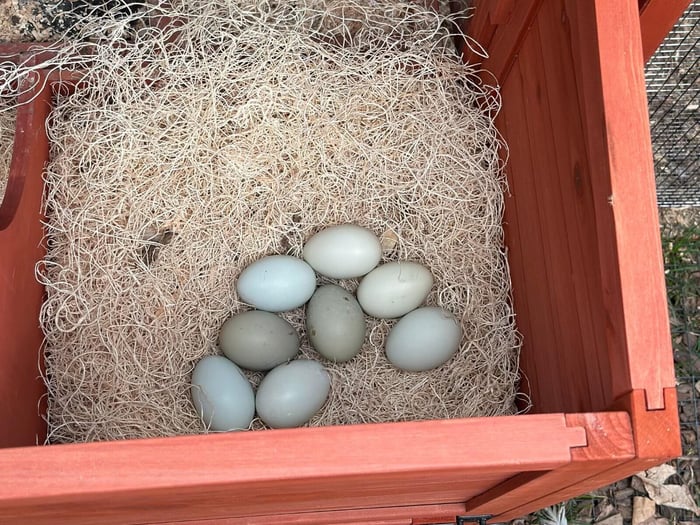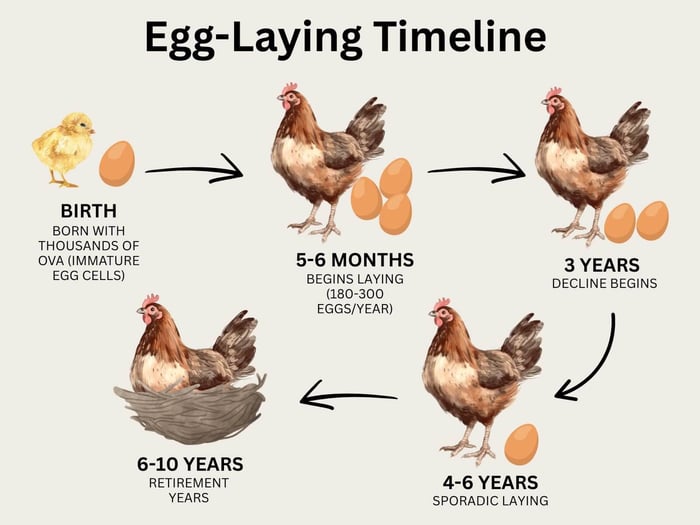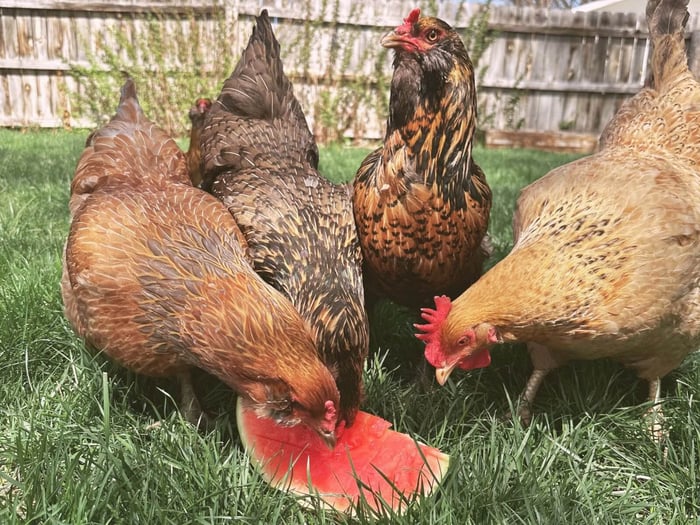Table of Contents
How to Get Chickens to Lay More Eggs
3 Simple Steps for a Steady Egg Basket
Whether you’re raising chickens in a suburban backyard or a sprawling homestead, nothing beats collecting a basket of fresh eggs from your own flock. But what happens when production starts to dip—or worse, stalls completely?
The good news is, most egg-laying issues have simple fixes. By understanding your chickens' needs and setting them up for success, you can encourage consistent egg production year-round.
Here are three essential strategies every chicken keeper should know if you want to learn how to get chickens to lay more eggs.
1. Start With High-Producing Chicken Breeds
Genetics play a big role in how many eggs your hens will lay each year. Some breeds are naturally prolific layers, while others were developed more for meat, ornamental value, or broodiness.
If your goal is maximum egg production, the breed of your chickens matters more than you might think.
Best Egg-Laying Chicken Breeds
Golden Comet
One of the top performers in backyard flocks. These hybrids can lay between 280–320 large brown eggs per year and often start laying as early as 16 weeks. They’re low-maintenance and known for their friendly, calm nature.Leghorn
Lightweight and efficient, White Leghorns can produce over 300 white eggs annually. They’re active foragers and love open spaces, making them ideal if you free-range your flock.Isa Brown
Known for their reliability and friendliness, Isa Browns lay an average of 300 brown eggs per year and are a favorite among new chicken owners. They tend to be docile and do well in smaller backyard spaces.Rhode Island Red
This hardy, dual-purpose breed lays around 250–300 eggs annually and adapts well to different climates. They’re slightly more independent than other breeds, making them great for less hands-on keepers.Australorp
A beautiful, calm breed with glossy black feathers. Expect about 250–280 eggs per year from these dependable hens. The Australorp even holds the world record for most eggs laid by a hen in a single year—364!
If you’re wondering how to get chickens to lay more eggs over a longer span of time, mixing hybrid and heritage breeds can be a smart strategy. Hybrids give you a strong start with high egg production in the early years, while heritage breeds may lay fewer eggs per year but often continue producing for more years overall.
2. Provide a Quiet, Comfortable Nesting Area
Even the best-laying hens need the right environment to feel safe enough to lay. Nesting box setup is often overlooked, but it can make a huge difference in whether your chickens lay consistently—or start hiding eggs in the bushes.
What Makes a Good Nesting Box?
Low-Light, Quiet Location
Place nesting boxes in the darker, quieter corners of your coop. Hens prefer to lay in privacy. This can help reduce stress and support regular laying.Clean, Soft Bedding
Use straw, pine shavings, or washable nesting pads to cushion the eggs and keep the space inviting. Dirty or uncomfortable boxes will push hens to lay elsewhere—or not at all.Accessible but Protected
Make sure boxes are easy for hens to hop into, but not too exposed to drafts or predators. Proper airflow without cold spots is ideal.Right Number of Boxes
One box per 3–4 hens is typically enough, but if you notice competition or hens laying elsewhere, consider adding another. Overcrowded nesting spaces can lead to cracked eggs or stressed birds.Encouragement Tools
Place a ceramic or wooden egg in the box to signal it’s a safe place to lay. Chickens are more likely to lay where they see other eggs—it’s an instinctive behavior.
Many chicken keepers searching for how to get chickens to lay more eggs overlook this step, but environment plays a huge role. A clean, cozy, and calm nesting area helps hens stay on a regular laying schedule.
3. Collect Eggs Frequently to Avoid Broody Hens
Daily egg collection isn’t just about freshness—it’s also a secret weapon against broodiness.
When eggs are left in the nesting box too long, some hens may become broody. That means they’ll stop laying altogether, hunker down in the box, and refuse to leave—even if the eggs aren’t fertilized.
What Is a Broody Hen?
A broody hen is one that’s decided it’s time to hatch chicks. You’ll notice she’s sitting in the nesting box nearly all day, fluffs up her feathers when approached, and may peck at you if you try to move her. This behavior is normal, but if you're not looking to hatch eggs, it disrupts the entire flock’s egg production.
If you’re trying to figure out how to get chickens to lay more eggs on a consistent schedule, avoiding broody behavior is key. Broody hens stop laying, take up nesting box space, and can even influence other hens to do the same.
Benefits of Frequent Egg Collection
Discourages Broodiness
Empty nesting boxes help break the broody cycle before it begins.Keeps Eggs Clean
Eggs are more likely to be soiled or cracked the longer they sit in the box. Collecting twice a day helps maintain egg quality.Prevents Egg Eating
Once a hen starts eating eggs, it’s very hard to stop. Collecting regularly prevents this bad habit from starting.
Pro Tip
Try collecting eggs once in the morning and again in the late afternoon. If you’re gone during the day, a single collection in the evening works too—just be consistent.
Egg collection is one of the simplest ways to solve the problem of how to get chickens to lay more eggs without major intervention. It only takes a couple minutes a day, but it makes a huge difference.
Final Thoughts: Small Steps, Big Results
Increasing egg production doesn’t require a major overhaul—just a thoughtful setup, the right breeds, and consistent daily care. If you focus on these three steps, you’ll be well on your way to gathering more eggs with fewer headaches.
Chickens are creatures of habit. The more stable and positive their environment, the more regularly they’ll lay. By optimizing their breed genetics, their laying space, and your egg collection routine, you’re setting the stage for long-term success.
Still wondering how to get chickens to lay more eggs? Focus on creating a stress-free routine. Keep the coop clean, offer healthy food and supplements like oyster shells for calcium, and maintain a consistent day-night cycle. When in doubt, go back to the basics.
FAQs
How many eggs do chickens lay per day?
Most high-yield hens lay one egg every 24–26 hours. You won’t get an egg every single day from every bird, but you’ll often average 5–6 eggs per week per hen.
How long do chickens lay eggs?
Egg production usually peaks during the first 2–3 years. Hybrid breeds may taper off sooner, while heritage breeds can lay for 5–7 years, though at a slower rate.
What can I feed chickens to help them lay more eggs?
Use a balanced layer feed with at least 16% protein, and supplement with oyster shells for calcium. Occasional treats like leafy greens or mealworms can help—but avoid overfeeding snacks.
Can stress cause hens to stop laying?
Yes. Changes in environment, loud noises, overcrowding, predators, or poor diet can all stress chickens and reduce egg production. Keep routines consistent and provide a secure coop.
Do chickens need light to lay eggs?
Yes. Hens typically need 14–16 hours of daylight to maintain optimal laying. During winter months, supplemental coop lighting can help if you want to maintain production, but this is up to you!


.png)





